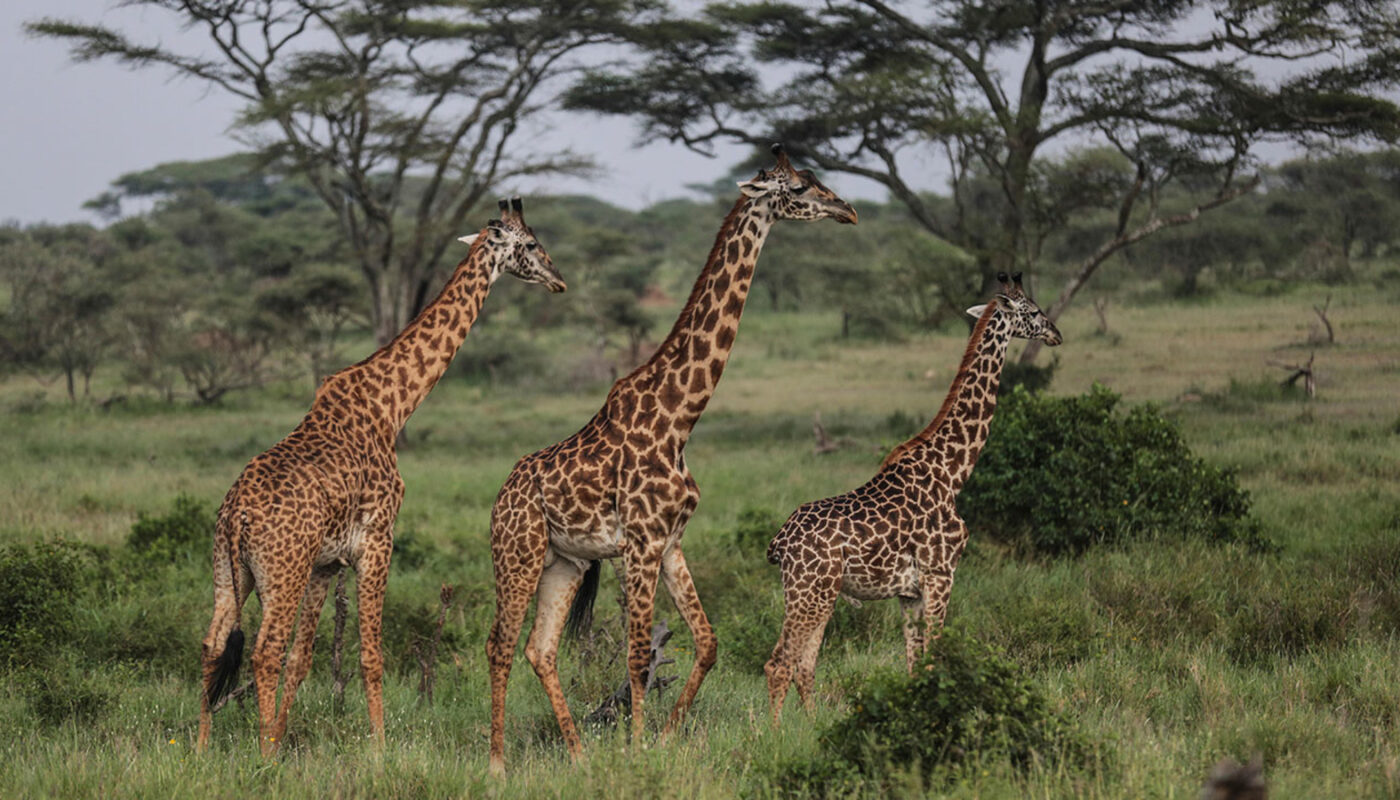A recent study has revealed that the best way to protect and save giraffes is through effective wildlife law enforcement and the eradication of poaching. Giraffes, with their unique shape and height and captivating spot patterns, are iconic animals of the African savannas. However, these majestic creatures are facing major threats to their survival in the wild, resulting in their classification as an endangered species.
The study, conducted by researchers from the Doñana Biological Station, Penn State University, and Wild Nature Institute and published in the journal Global Change Biology, aimed to understand the threats to giraffe populations and how human actions could help mitigate these threats, allowing giraffes and humans to coexist harmoniously in African savannas.
Giraffes require vast expanses of land due to their large size. They have a long lifespan of nearly 30 years but breed slowly, with giraffe mothers typically giving birth at the age of six and producing only one calf every two years thereafter. Unfortunately, giraffes have fallen victim to one of the most cunning predators of all: humans. Poachers, often working for criminal syndicates, hunt giraffes illegally to sell their meat and body parts in bushmeat markets.
In addition to poaching, giraffes are losing their natural savanna habitat to farming and urban development, while climate change is intensifying heavy rainfall events that spread diseases, resulting in giraffe deaths. To protect giraffes, it is crucial to identify the primary causes of their population decline, both natural and human-induced, and explore how human actions can mitigate these threats.
The study focused on understanding the impact of changes in land use, illegal hunting, and rainfall on the abundance of Masai giraffes in the Tarangire region of Tanzania, East Africa. This region is home to renowned national parks, an ecotourism livestock ranch, and village lands, each with varying levels of land and wildlife conservation.
Over the course of nearly a decade, the scientists closely monitored giraffes in the Tarangire region to determine how different threats influenced their survival. By combining this information with data from previous studies, the researchers developed an individual-based model that simulated realistic population dynamics and extinction risks under various scenarios of environmental change over 50 years.
The scientists tested a range of credible threats to giraffe persistence in the region, such as the expansion of towns along the edges of the study area, loss of habitat connectivity, changes in predation pressure on giraffe calves due to fluctuations in lion and wildebeest populations, and the predicted increase in heavy rainfall events in East African savannas. They also explored combinations of these scenarios and proposed management actions to mitigate the threats.
The study revealed that the most significant risk to giraffe populations and their risk of extinction stemmed from a reduction in wildlife law enforcement, resulting in increased poaching. Conversely, strengthening law enforcement efforts could alleviate the adverse effects of extreme rainfall events and town expansions. These findings underscore the crucial role of law enforcement in nature conservation.
Furthermore, the researchers discovered that giraffes benefited from the presence of traditional livestock herders on the rangelands outside protected areas, which are shared by both giraffes and pastoralists. Challenges emerged when giraffe habitats were converted into farmland, when sprawling towns encroached upon their habitats, forcing giraffes to travel longer distances for food and water, and when giraffes were hunted for bushmeat markets.
To address these challenges and promote giraffe conservation, the scientists recommended expanding wildlife law enforcement in village lands outside protected areas. They also emphasized the importance of promoting legal livelihoods to reduce the incentive for poaching and permanently protecting wildlife movement pathways from farming, mining, and infrastructure development, enabling giraffes and migratory wildebeest to access high-quality habitats.
Implementing these measures would not only increase the giraffe population in the Tarangire region but also contribute to the recovery of this endangered species, ensuring the coexistence of humans and giraffes thrive together in African savannas.
*Note:
1. Source: Coherent Market Insights, Public sources, Desk research
2. We have leveraged AI tools to mine information and compile it



